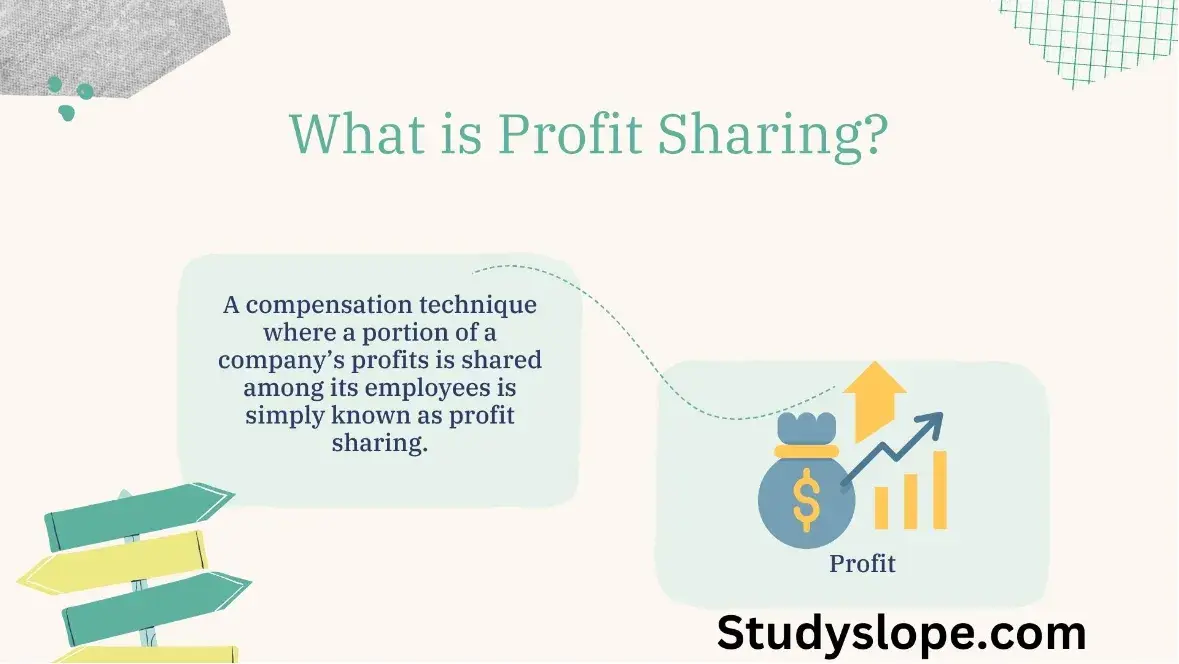Table of Contents
If you want to reward and incentivise your employees and looking for a way to do so then profit profit sharing plan can be the best way to do so. However, before creating a plan, you must know what is profit sharing and how it works. In this article, we will study in-depth about profit-sharing plans.
What is Profit Sharing?
A compensation technique where a portion of a company’s profits is shared among its employees is simply known as profit sharing. The profit-sharing payments rely on the following:
- Profitability of Business
- Wages and Bonuses of Employees
- The amount is set by the business.
With the profit-sharing plan, employees receive a share of the company’s profits over a specific period based on predetermined criteria. It works as a method to align the interests of employees with the success of the business. Employees usually receive profit shares in the form of cash or company stock.
A lot of businesses offer profit-sharing as a retirement benefit for employees. However, if the company does not generate profit over a specific period, they don’t have to contribute to that time frame.
Related: What is an Organization? Definition, Characteristics, Examples, Importance, & Types
How does Profit Sharing Work?
The company will create a profit-sharing plan, including the terms and conditions. They share this with their employees about how the profit will be calculated and how it will be shared among them. The company may set certain eligibility criteria, like a minimum period of service, which means it may not be available for new employees. The company will use financial metrics such as net income, operating profit, or profit-sharing as outlined in its profit-sharing plan. After the profit is calculated, only a certain amount is allocated for sharing among employees, depending upon certain factors like seniority, performance, and job roles. The distribution of profit can be made annually, semi-annually, or as per the profit-sharing plan.
Types of Profit Sharing Plans
There are different types of profit sharing plans, each with distinctive characteristics to accommodate the requirements of employers and employees. The following are various types of profit sharing schemes:
Plans based on cash:
Cash payments are deposited directly into employees’ accounts by employers by the profit-sharing arrangement.
It provides monetary compensation for personnel, granting them direct entry to their portion of earnings.
Preserved Strategies:
Employers make contributions to the retirement accounts of their employees, which is comparable to defined contribution retirement plans. Nevertheless, these funds are inaccessible to employees until they retire or depart from the organisation.
Combination Plans:
An integration of cash-based and deferred plan components. In addition to contributing to retirement accounts with cash, employers also establish deferred plans.
ESOPs: Employee Stock Ownership Plans
Employers provide employees with shares of company stock instead of currency as an element of the profit-sharing arrangement. Employees acquire a portion of the company’s ownership, thereby aligning their interests with the success of the organisation. Over time, the value of shares may increase.
Example of Profit Sharing
Let’s Consider you have a small business of Spare parts for Trucks and Buses. This year you have gained a profit of 200,000$, and you plan to share 10% of your annual profit with your 3 employees. Ram earns 40,000$, Sham earns 45,000$ and Bijoy earns 35,000$ a year. The total compensation for all three employees is 120,000$. Now we will use the profit-sharing formula to calculate how much each employee would receive.
Profit sharing amount = (profits x profit sharing percentage) X (Employee compensation/Total employee compensation)
Ram: ($200,000 x 0.10) x ($40,000/120,000) = $6,666.67
Sham: ($200,000 x 0.10) x ($45,000/120,000) = $7,500
Bijoy: ($200,000 x 0.10) x ($35,000/120,000) = $ 5,833.33
Profit Sharing Plan vs. 401(k)
In general, both profit-sharing and 401(k)s are retirement benefits however they aren’t the same. Profit-sharing plans distribute a certain portion of the company’s profits among employees at the employer’s discretion.
In PSP employees don’t contribute any amount. Whereas in 401(k) plans employees can contribute a certain sum of their salary to their retirement plans.
Depending on the type of 401(k) plan, the employer might make a matching contribution. Moreover, a company can offer other types of retirement plans, like 401(k) along with a Profit-Sharing Plan.
Profit sharing advantages and disadvantages.
Benefits of profit sharing
Let’s dive into the benefits of profit sharing to a company.
- Profit sharing helps employee retention by providing financial incentives to work with the company in the long run.
- It helps to increase employees’ motivation towards company success as their hard effort impacts profitability and thus their earnings.
- Profit-sharing plans’ structures can be adaptable, allowing businesses to tailor the program to their specific needs and financial situation.
- Employers can save on taxes when they put money into a 401(k)-retirement savings plan with profit-sharing because the contributions are made before taxes, are tax-deductible, and don’t have taxes taken out. They are not the same as Social Security and Medicare payments in this way.
Disadvantages of Profit Sharing
Although profit sharing is an appealing perk, it is not without its potential drawbacks.
Variable costs: Profit sharing can exert a substantial financial burden on a budget during periods of low profitability.
No guarantee for employees: Employers may reduce or omit PSP contributions from year to year, which may dissatisfy workers who have come to anticipate this benefit (unless a labour union-mandated employment contract specifies otherwise).
Possibility of adverse effects on employee performance: Although a PSP may enhance employee motivation, it is also capable of producing adverse effects. The predetermined method of profit-sharing distribution may potentially demotivate employees from trying for performance improvement. On the contrary, an incentive such as an employee bonus may be entirely dependent upon performance.
Complex administration: Due to reporting requirements, nondiscrimination testing, and other IRS and U.S. Department of Labour regulations that businesses must follow, establishing and managing profit-sharing plans can be difficult.
Related: What is an Industrial Product? Definition, Characteristics, Types, and Examples

